Crafting an exceptional chief of staff resume can be the key to stepping into a role that shapes strategy and drives high-level decisions. Whether you’re aiming for your first chief of staff position or building on years of leadership experience, your resume needs to showcase your strategic thinking, leadership capabilities, and talent for cross-functional collaboration.
This guide offers practical tips, real-world examples, and expert insights to help your chief of staff resume stand out and make a lasting impression. Let’s take the next step toward your future on the executive team.
Chief of Staff Resume Examples
Explore Chief of Staff resume examples that highlight leadership, strategic planning, and executive support expertise. Use these samples to craft a resume that demonstrates your ability to drive organizational success and support C-level initiatives.
Chief of Staff for Retail Industry
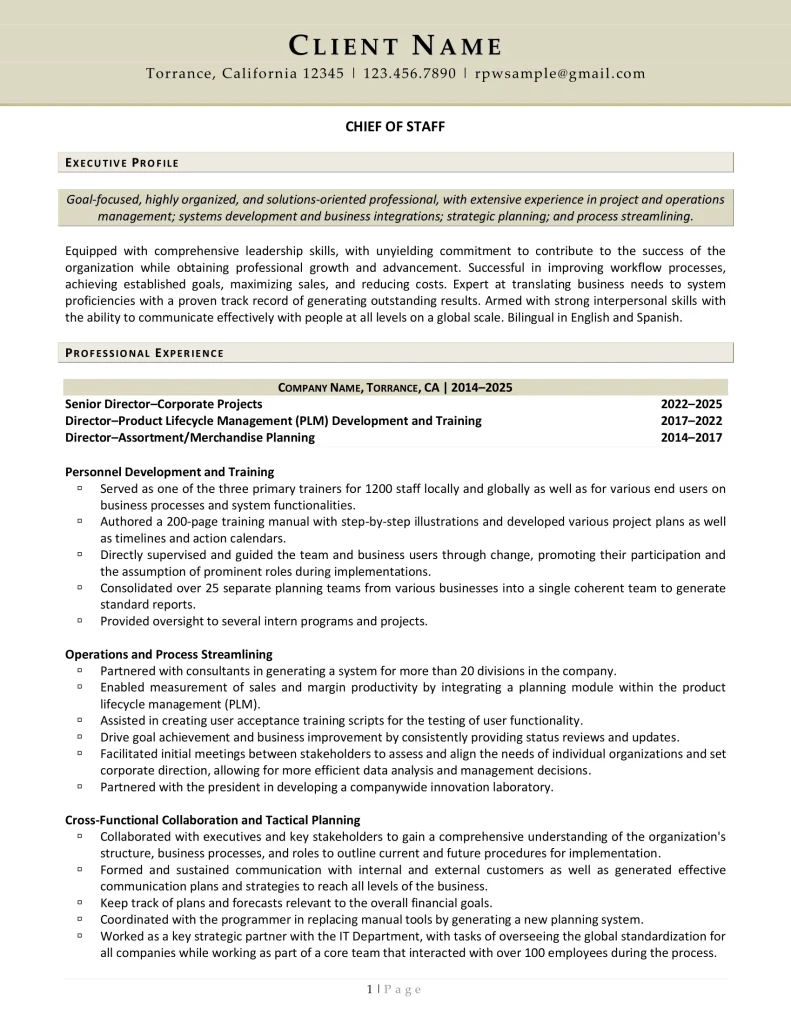
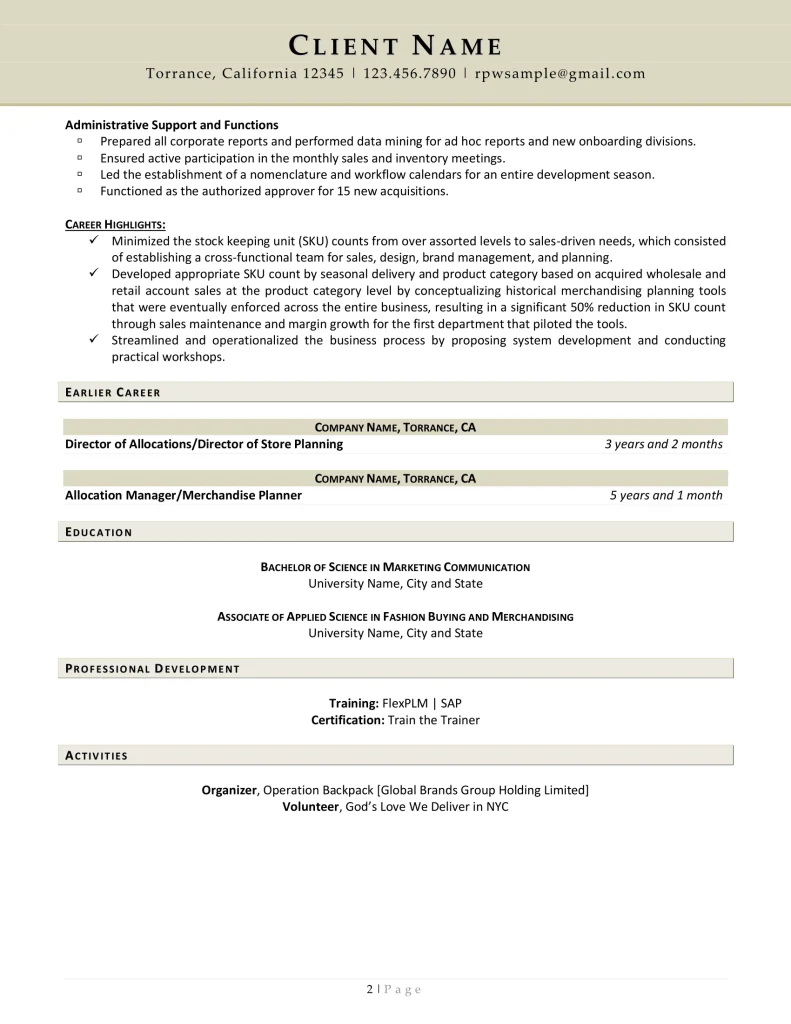
Chief of Staff for Finance Industry
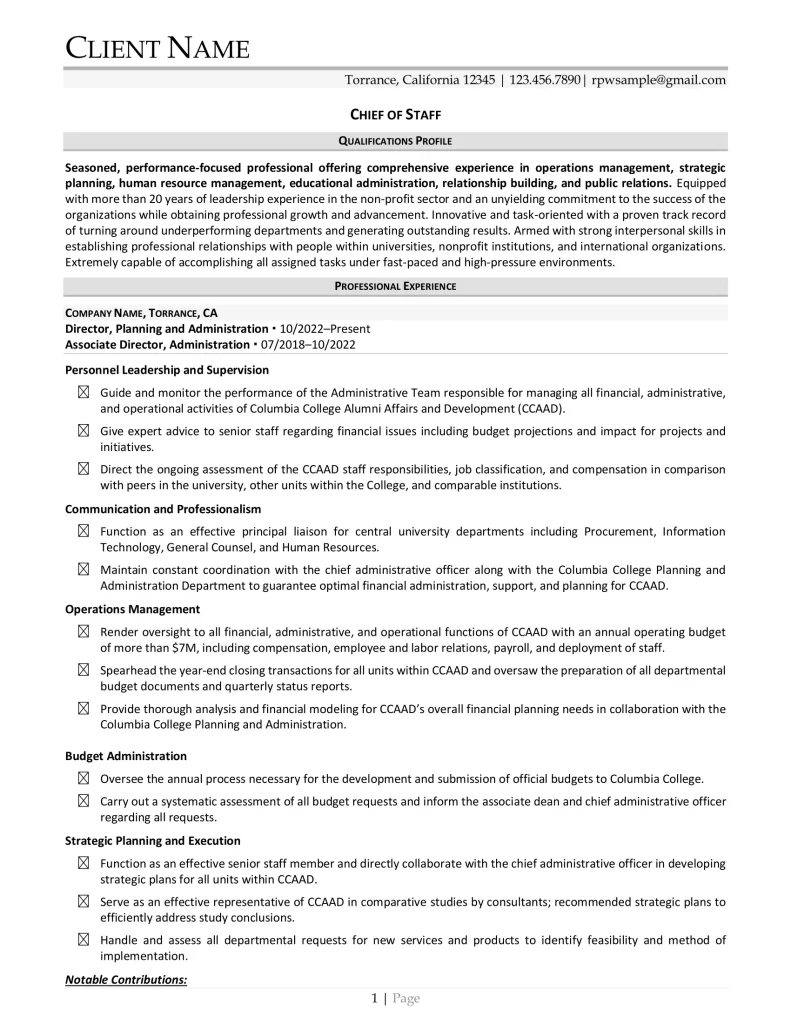
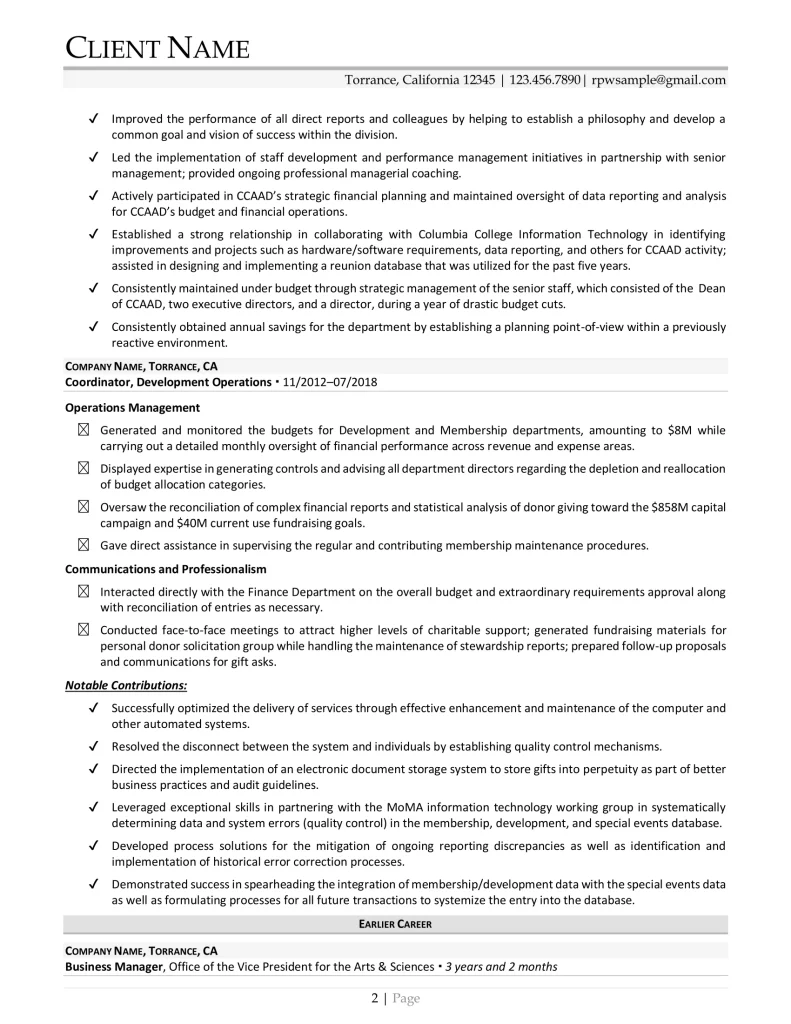
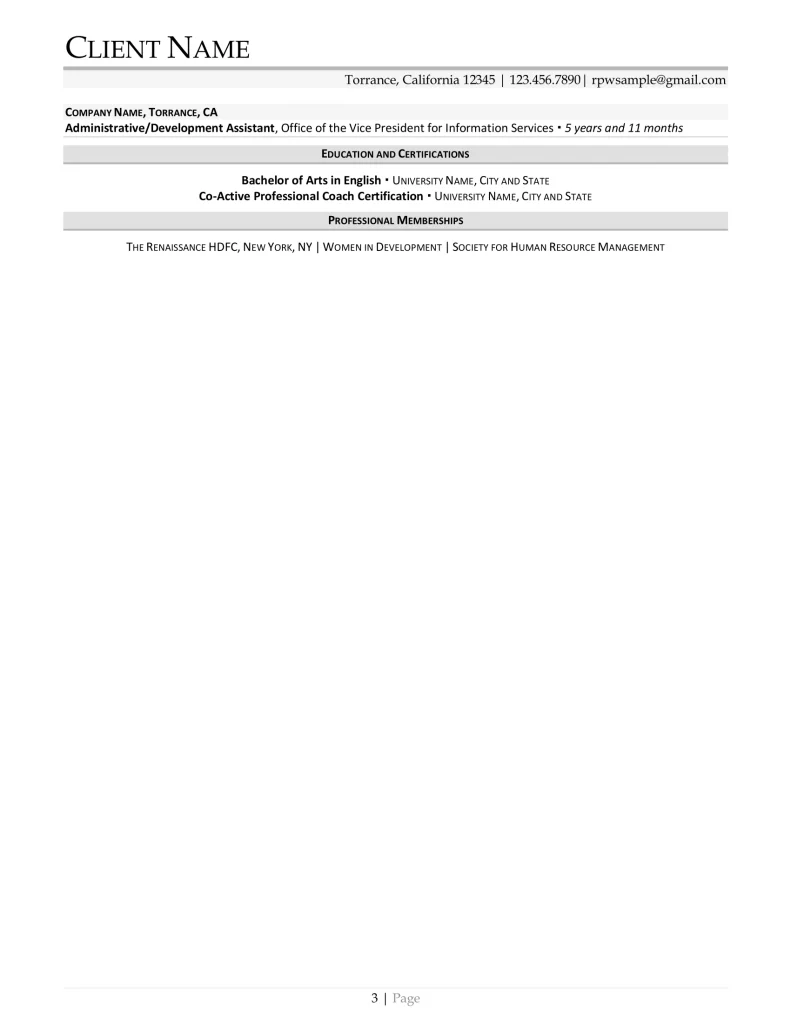
Chief of Staff for Sales Industry
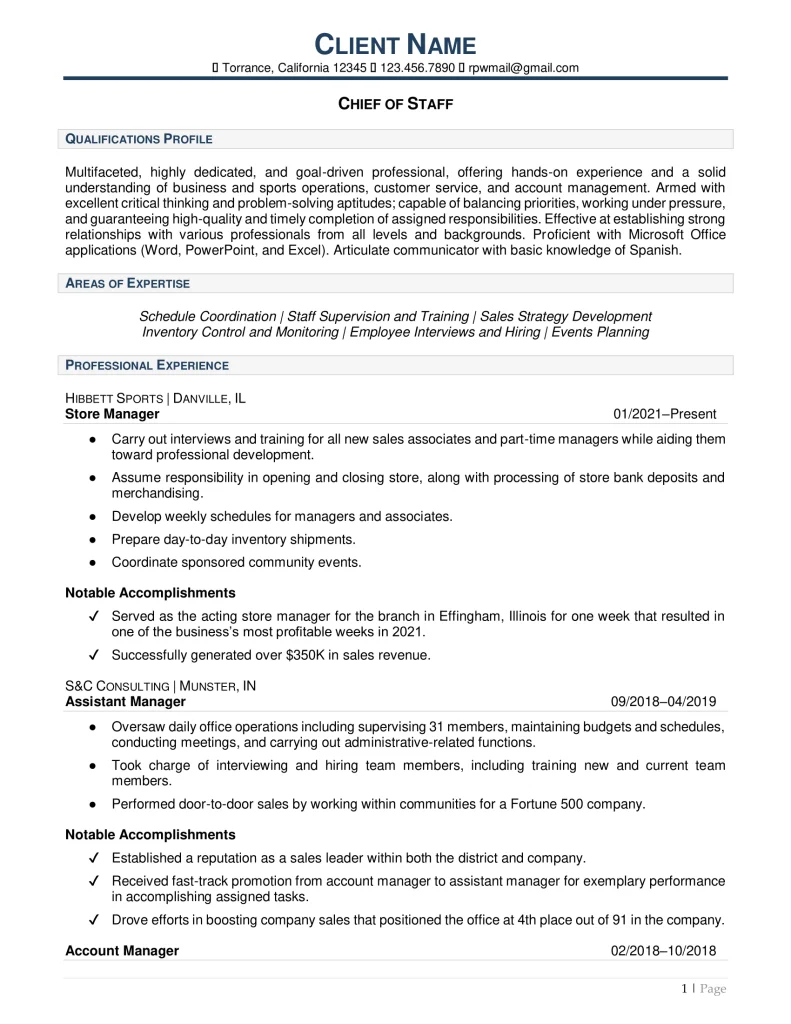
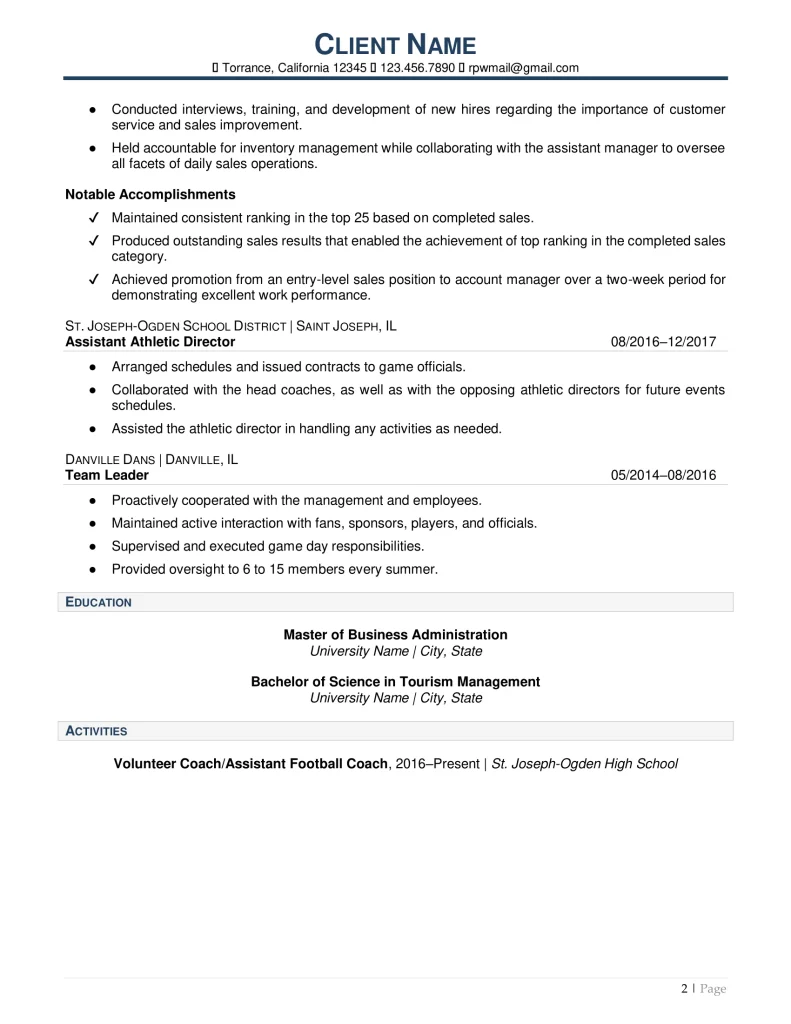
Chief of Staff for Government
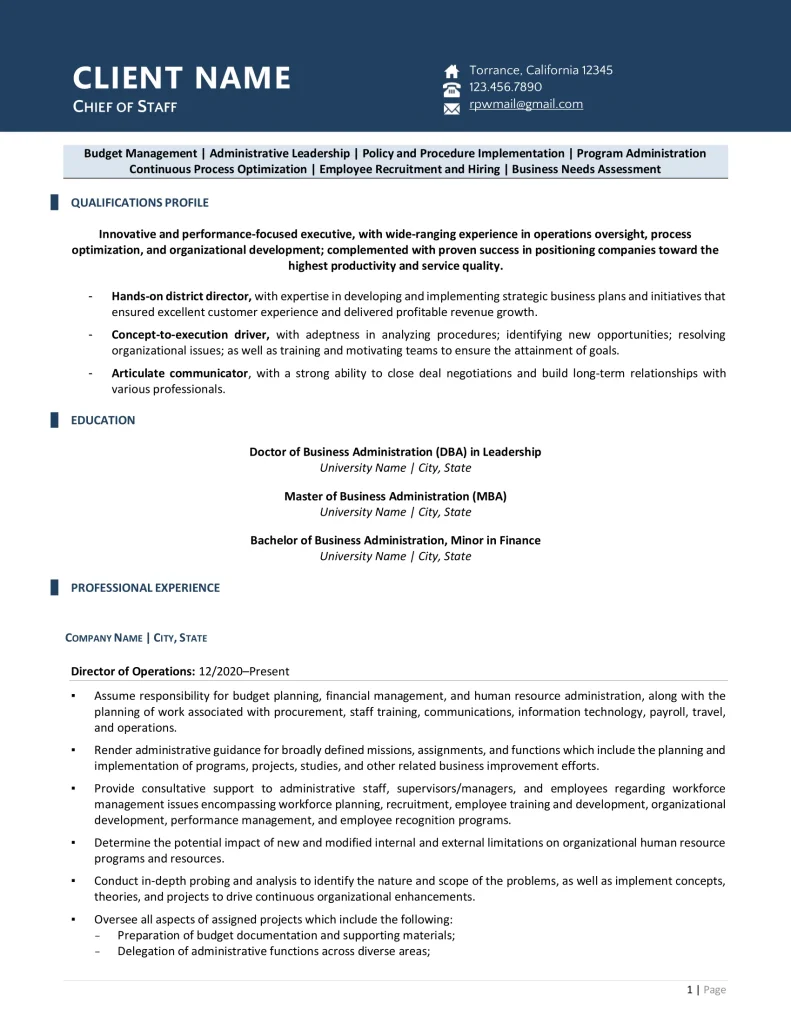
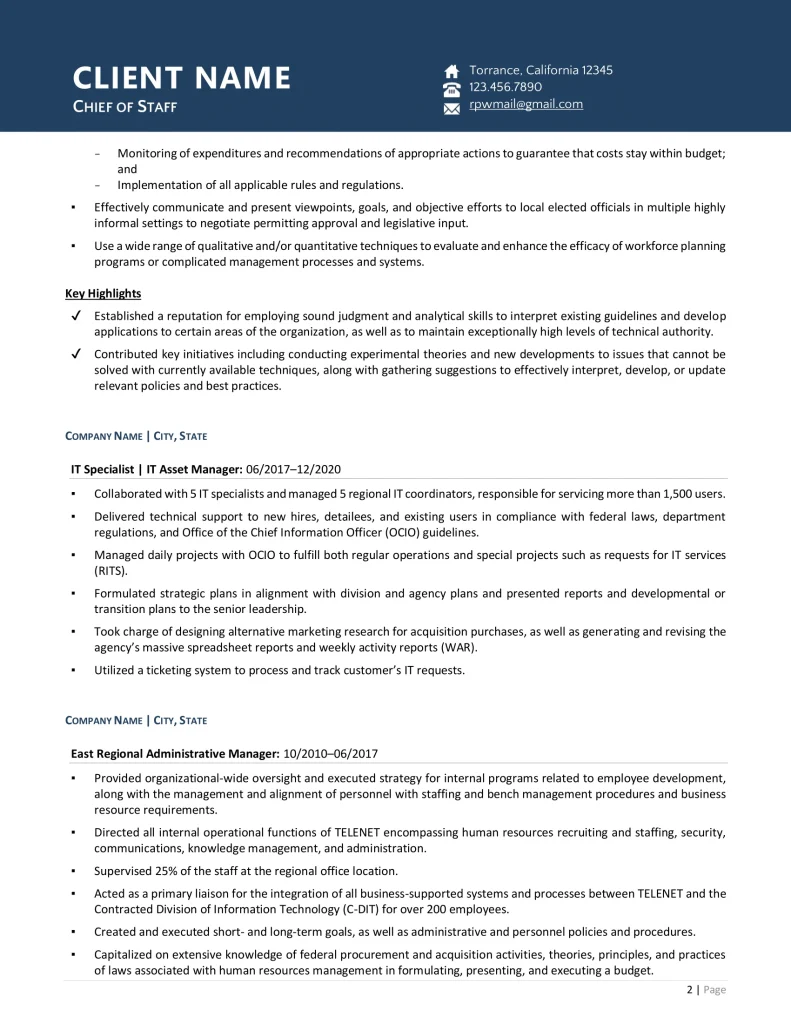

Chief of Staff for Biotech Industry
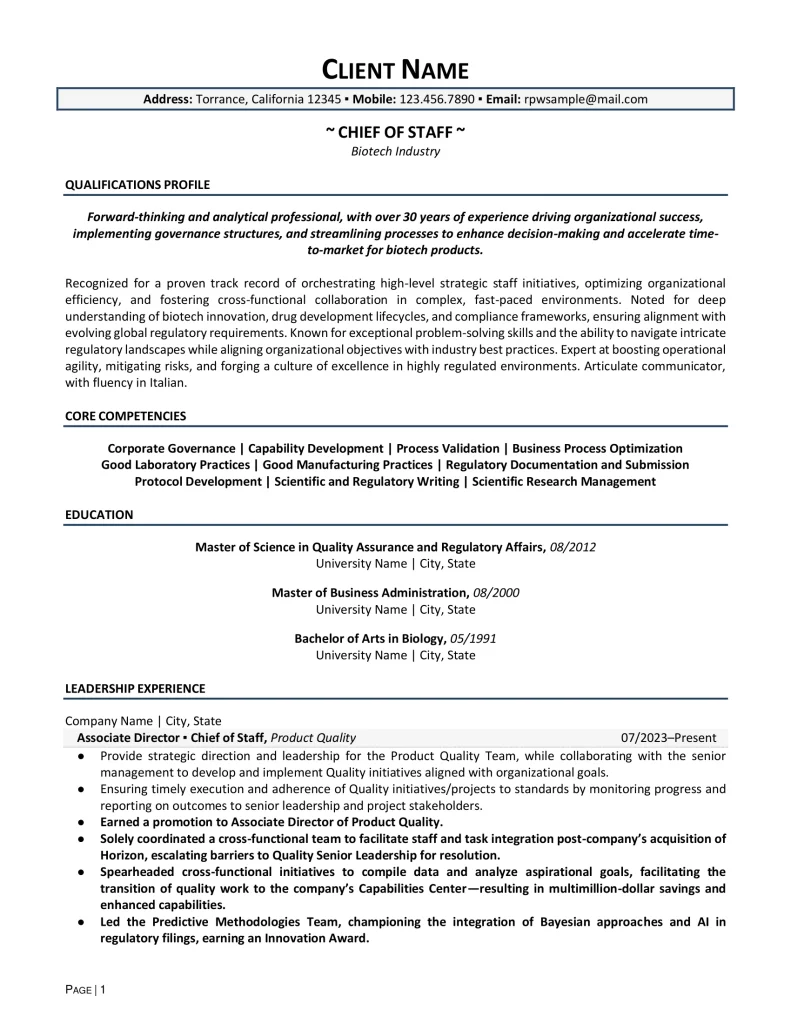
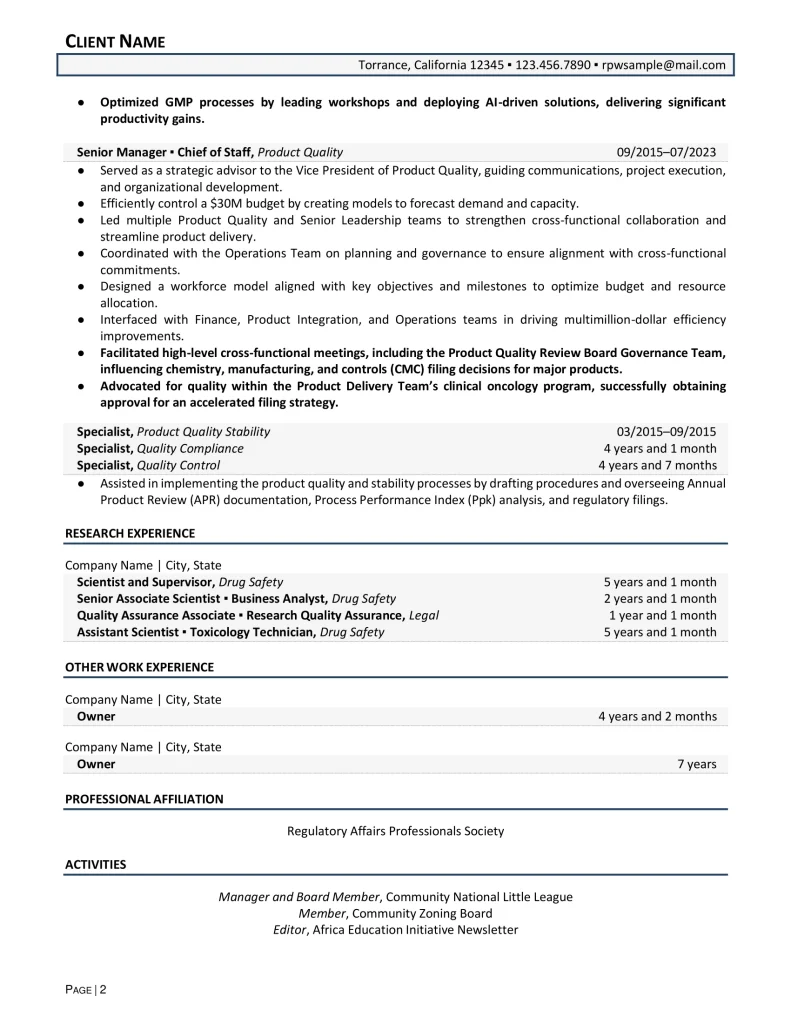
Chief of Staff for Healthcare
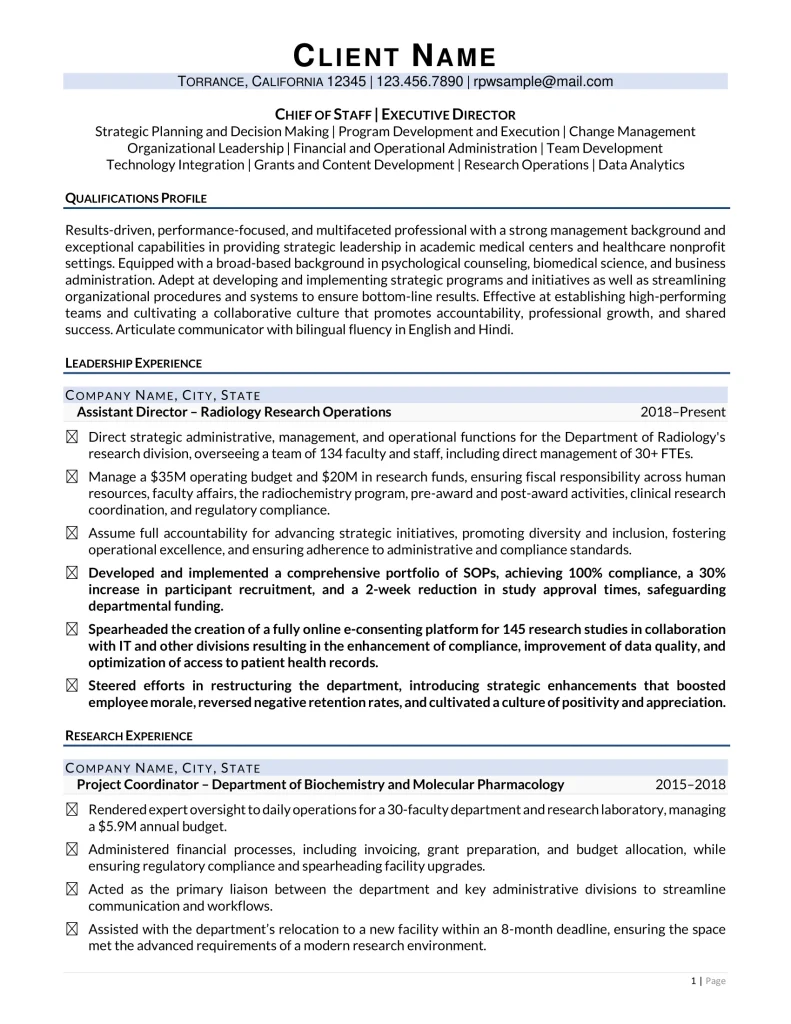
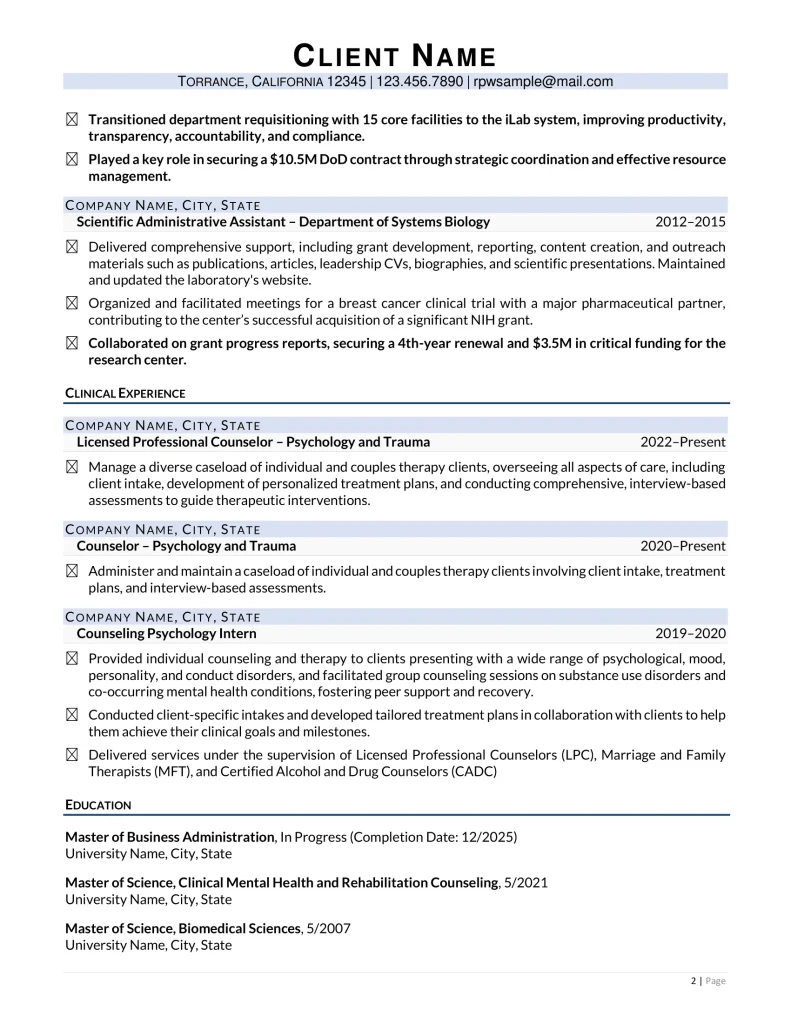
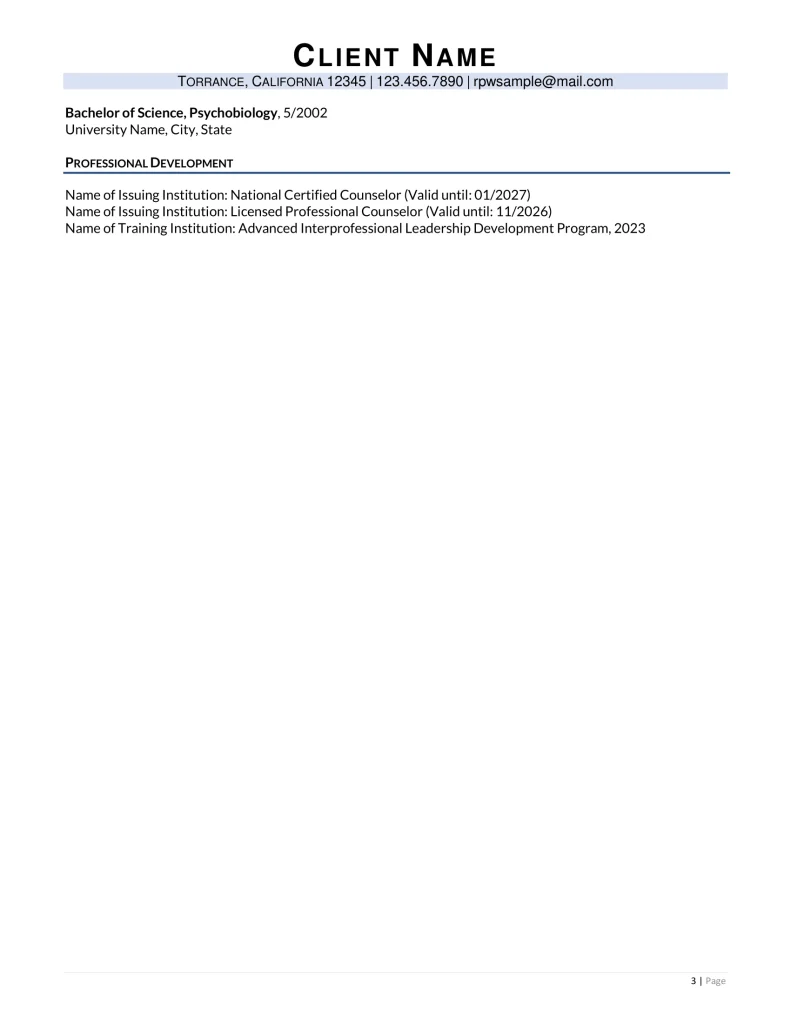
Chief of Staff for Managed Care
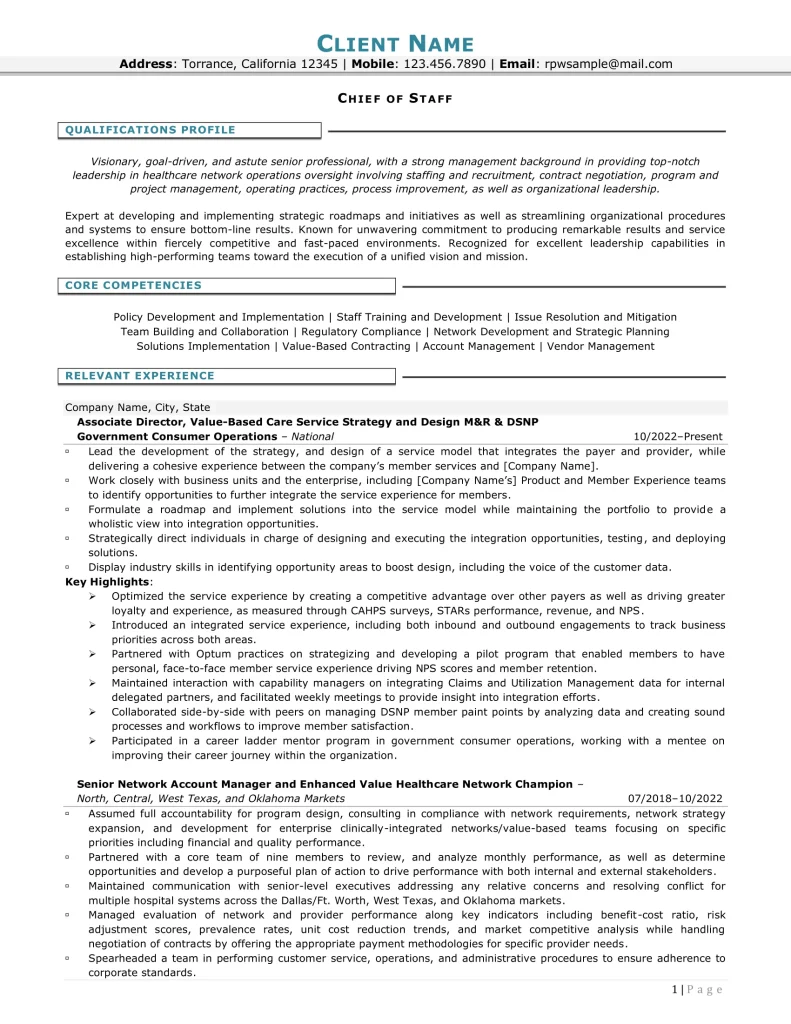
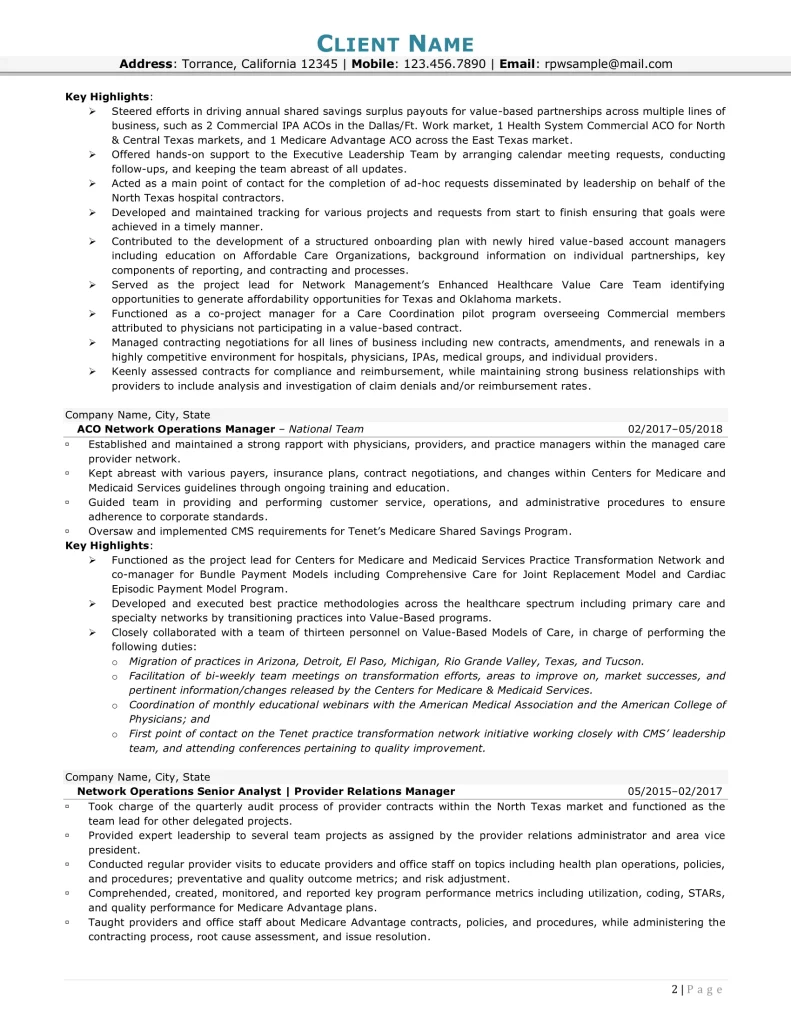
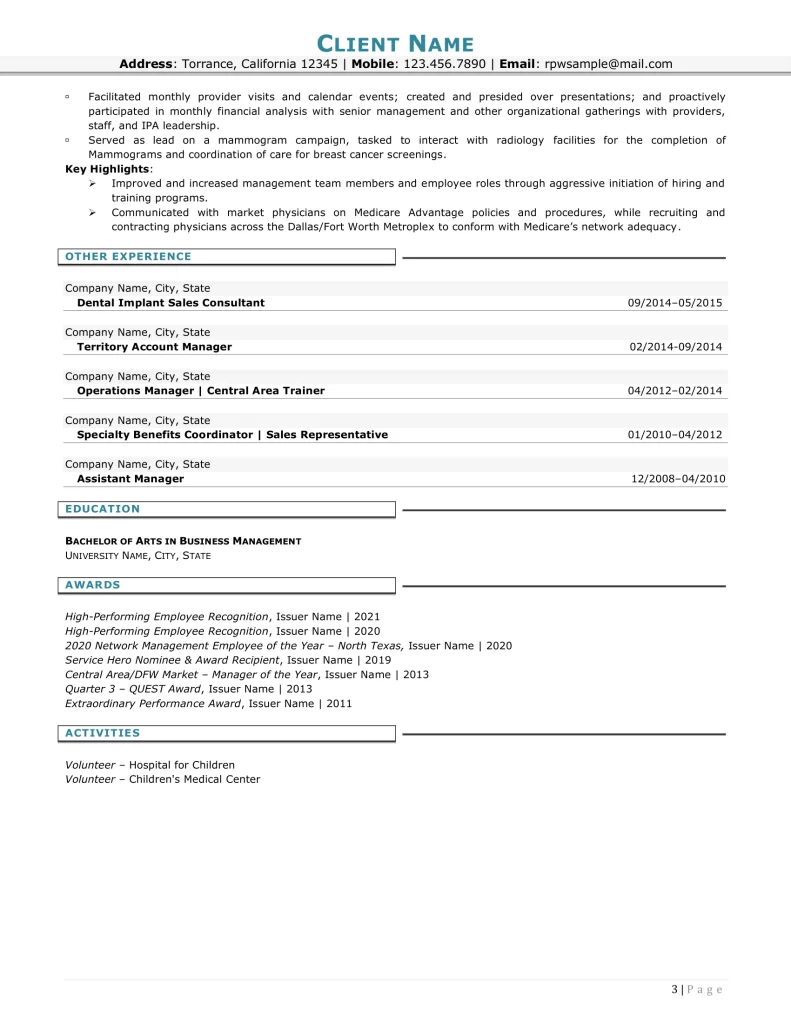
Key Elements to Include in a Chief of Staff Resume
Your chief of staff resume shouldn’t just list your past jobs. It needs to tell your story and show the value you bring to the table. Here’s what to include to make your resume stand out:
A Strong Summary
Start with a short, punchy summary that tells who you are as a leader. Mention how many years of experience you have, your top leadership skills, and a few big wins. This helps the hiring manager quickly see why you’re a strong applicant.
Experience Section
Use bullet points to explain what you did in each job. Don’t just list tasks—focus on your achievements. Were you an integral player in successful project or process improvement? Add numbers if you can, like “cut costs by 15%” or “led a team of 20.” This shows the real impact you made.
Key Skills
Highlight the skills that matter most for chief of staff roles. Show that you are capable of leading teams, solve problems, and work well with different departments. Include skills like project management, planning, and working with cross functional teams.
Education and Certifications
List your degrees and any extra training you’ve completed. Things like leadership programs or project management courses add weight and show you’re serious about growing your skills.
Soft Skills
Don’t skip soft skills—they’re super important. Strong communication, teamwork, and problem solving are key for a chief of staff. Make sure your resume shows how you use these skills to support the executive team and help the company succeed.

Top Skills for a Chief of Staff Resume
As mentioned earlier, skills are important in your resume because they show hiring managers exactly what you bring to the table. Here are some top skills to include:
Hard Skills:
- Strategic leadership for executive teams
- Project management for large-scale initiatives
- Advanced problem solving in fast-paced environments
- Cross functional collaboration across departments
- Budget management and financial oversight
- Data analysis for executive decision-making
- Risk assessment and mitigation
- Process improvement for operational efficiency
- Policy development and implementation
- Operations management for executive offices
Soft Skills:
- Clear and persuasive communication with executives
- Adaptability in high-pressure situations
- Critical thinking for complex challenges
- Emotional intelligence to support executive leadership
- Time management for multiple priorities
- Team development and mentorship
- Leadership in cross functional teams
- Conflict resolution within executive teams
- Quick decision-making under tight deadlines
- Organization of executive schedules and priorities
- Active listening to understand executive needs
- Flexibility to pivot as priorities shift
- Relationship building with key stakeholders
- Attention to detail in high-level projects
- Collaboration with board members and senior leaders

How to Format Your Chief of Staff Resume
A clean, professional format ensures your resume is easy to read and looks polished. The right format helps highlight your most impressive achievements and makes it easier for hiring managers to quickly find what they’re looking for. Here’s how to format yours effectively:
1. Use clear headings.
Your resume should have clear, bold section titles so hiring managers can easily navigate through your information. Good headings break up your resume and guide the reader’s eye naturally. Use headings like Professional Summary, Work Experience, Key Skills, and Education and Certifications to organize your resume neatly.
2. Stick to reverse chronological order.
Always list your most recent role first in the experience section. This puts your latest and most relevant accomplishments right at the top, where they catch attention quickly.
Example:
- Chief of Staff | ABC Corporation | June 2020 – Present
- Senior Project Manager | XYZ Inc. | January 2016 – May 2020
- Project Coordinator | DEF Ltd. | July 2012 – December 2015
3. Keep it concise.
Aim to keep your resume to two pages at most. Only go longer if you have many years of executive-level experience. Focus your descriptions on measurable achievements rather than listing every duty you’ve performed.
4. Use bullet points.
Bullets make your resume much easier to skim, which hiring managers appreciate when reviewing many applications. Each bullet should highlight a key accomplishment or responsibility.
5. Choose a simple font.
Your resume should look clean and professional. Choose easy-to-read fonts like Arial, Calibri, or Times New Roman in 10–12 pt size. Fancy or decorative fonts can distract from your content and hurt readability. For example, you may use Calibri 11 pt for the main text and Calibri Bold 14 pt for headings. Maintain consistent spacing and style throughout.
6. Include white space.
Good use of white space keeps your resume from looking cluttered and allows the reader to focus better on your achievements. White space also makes your document feel modern and organized. Your formatting should support your content, not overshadow it.

Secure Your Executive Seat with the Help of Resume Professional Writers
Landing a top chief of staff role requires more than just experience—it takes a resume that truly showcases your ability to lead, collaborate, and drive results. By tailoring your chief of staff resume to highlight your unique strengths, aligning it with the specific demands of the industry, and formatting it professionally, you’ll position yourself as the standout candidate.
Ready to take your career to the next level? Let our expert resume writing team craft you a resume that opens doors to your next big opportunity. Your executive seat is within reach—ensure your resume gets you there.








